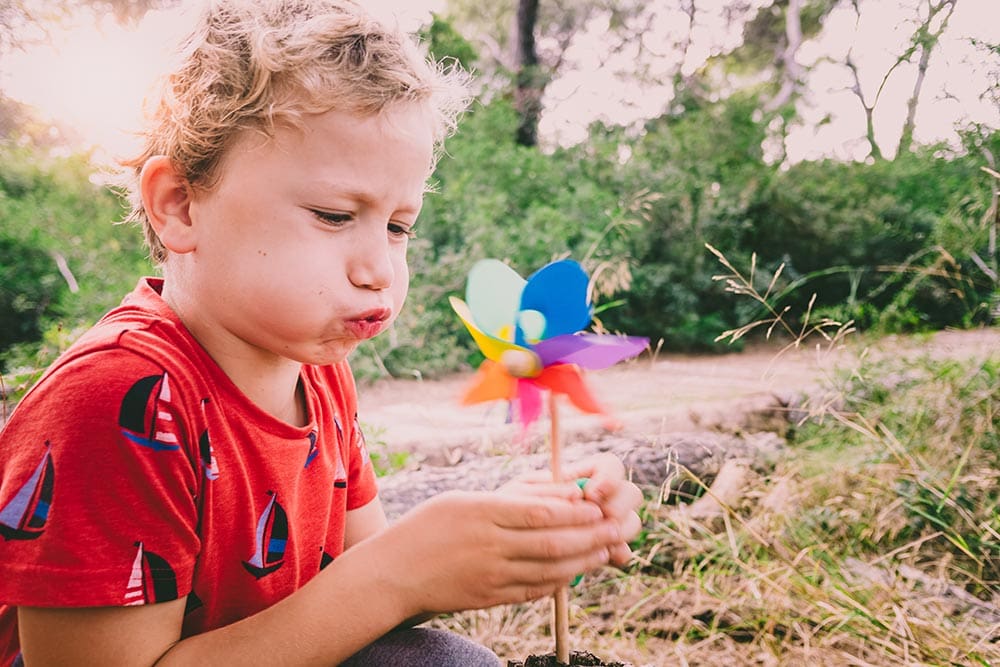Deep Breathing Exercises for Self-Regulation
What’s inside this article: The benefits of deep breathing exercises for children, including how they help with self-regulation. How to teach kids to do deep breathing correctly, activities, and printable posters.
Deep breathing exercises are an excellent way to self-regulate.
Continue reading to find out how deep breathing exercises help self-regulation, how to teach children to do deep breathing, and what the benefits of it are.
When we experience unpleasant emotions, our sympathetic nervous system is activated. This means we breathe faster, our hearts start racing, we feel knots in our stomachs, etc.
We can’t really control our emotions, but we can learn to better control our behavior and how we react to our feelings.
Our bodies and our minds are connected. That’s why there’s a physiological response to emotions.
Deep breathing helps calm down the body by regulating the physiological reactions we have to stress, which, in turn, helps calm our minds as well.
Benefits of Deep Breathing for Self-Regulation
According to the experts at Harvard, deep breathing benefits us in a few different ways. It regulates our arousal level, which helps us calm our bodies and achieve self-regulation.
Here’s how:
- Lowers heart rate
- Lowers blood pressure
- Reduces the stress hormone cortisol
- Helps regulate body temperature
- Forces you to slow down your breathing
How to Practice Deep Breathing Correctly
It’s not complicated, but it might feel awkward and unnatural to practice deep breathing at first, especially for a child. There is actually a correct way to do it to get the maximum benefits:
- Inhale slowly through your nose until you can’t take in any more air
- Your stomach should expand. If you’re lying down, place your hand on your belly, and you’ll feel it rise.
- Exhale slowly and completely through your mouth. Make sure you gently exhale, like you would if you were blowing on hot food.
How do you teach kids to do deep breathing correctly?
This can be a little tricky for kids, but it’s a valuable skill to help them develop because it can help significantly with self-regulation.
Kids will often breathe out really hard or go too fast, not correctly engaging their diaphragm.
Of course, practice makes perfect. Practicing deep breathing exercises daily with your kids will help them become experts.
As parents and educators, you can help kids learn to correctly use deep breathing as a calming strategy by:
- Modeling the correct method
- Incorporating practice into your daily routine
- Making it fun
- Using visual aids – like the printable posters and videos found in this article
- Using positive reinforcement
- Being consistent
Practice Deep Breathing Daily
Before your child is able to do deep breathing exercises when they’re upset as a coping strategy, they need lots (and I mean lots) of practice when they’re calm and ready to learn.
Try doing deep breathing with your child for one-minute intervals:
- When they wake up in the morning
- After getting home from school
- At the dinner table, just before eating
- During transitional times
- at betime
It would help if you then started practicing at unplanned times during the day when things are slightly escalated or stressful but not out of control.
For example, if the children are hyper, and you’re getting ready to leave the house for a fun activity – let everyone know that before you leave, everyone is going to do one minute of deep breathing.
It might take a minute for everyone to settle and participate, but once they do, everyone will be calmer (including you), and it will be much easier to move on with your fun plans.
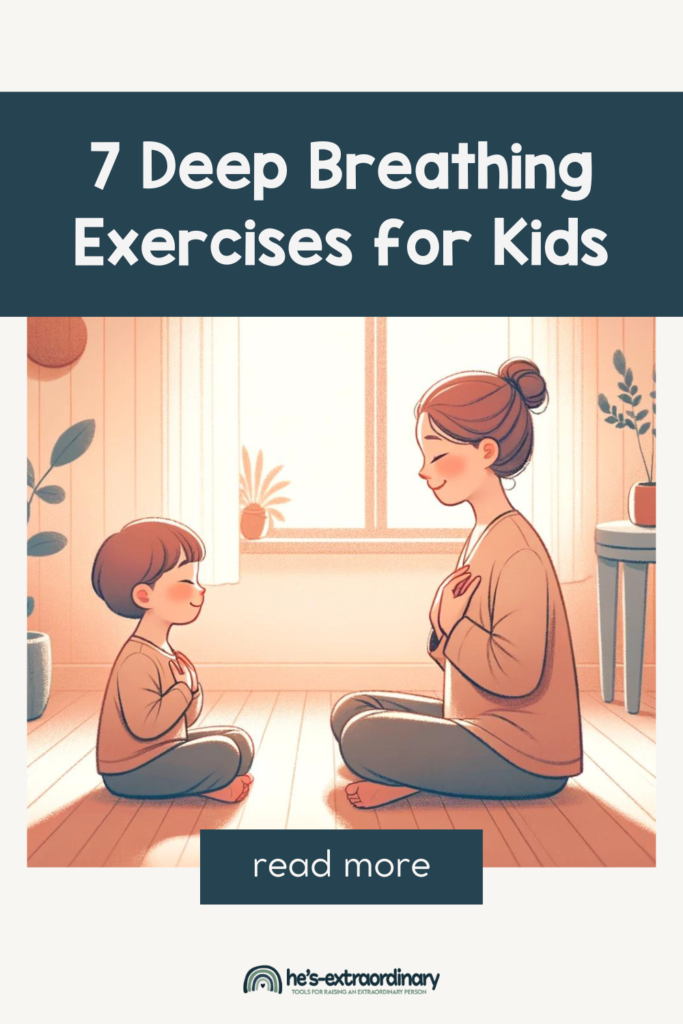
Deep Breathing Exercises for Kids
There are lots of great breathing exercises and activities out there that kids can use. I’ve created a few posters and videos that you can download, plus rounded up some other good ones I found online.
Square Breathing
I started with this one because it’s my favorite. This is the breathing technique that I use to help myself stay calm.
It’s part of the deep breathing posters package that I made; you can download it here.
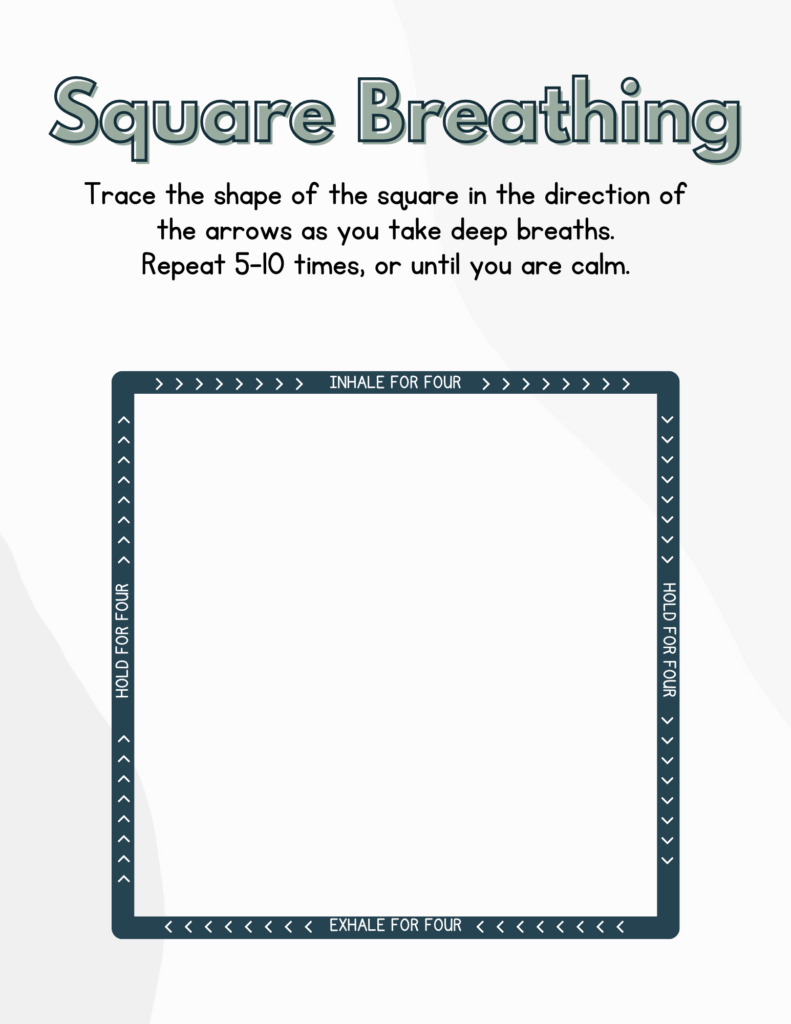
Birthday Cake Breathing
This is another one from the posters package. Birthday cake breathing creates visual imagery for children learning the correct way to take deep breaths.

Balloon Breathing
This is a great one for reinforcing how to practice deep breathing correctly.
- Inhale: Place your hands on your belly and breathe in slowly through your nose. Feel your belly, abdomen, and chest expanding out like a balloon. Hold your breath for 2 seconds.
- Exhale: Open your mouth and slowly blow all the air out of your lungs as if deflating your imaginary balloon.
- Repeat: Repeat this exercise five to ten times or until you are calm.
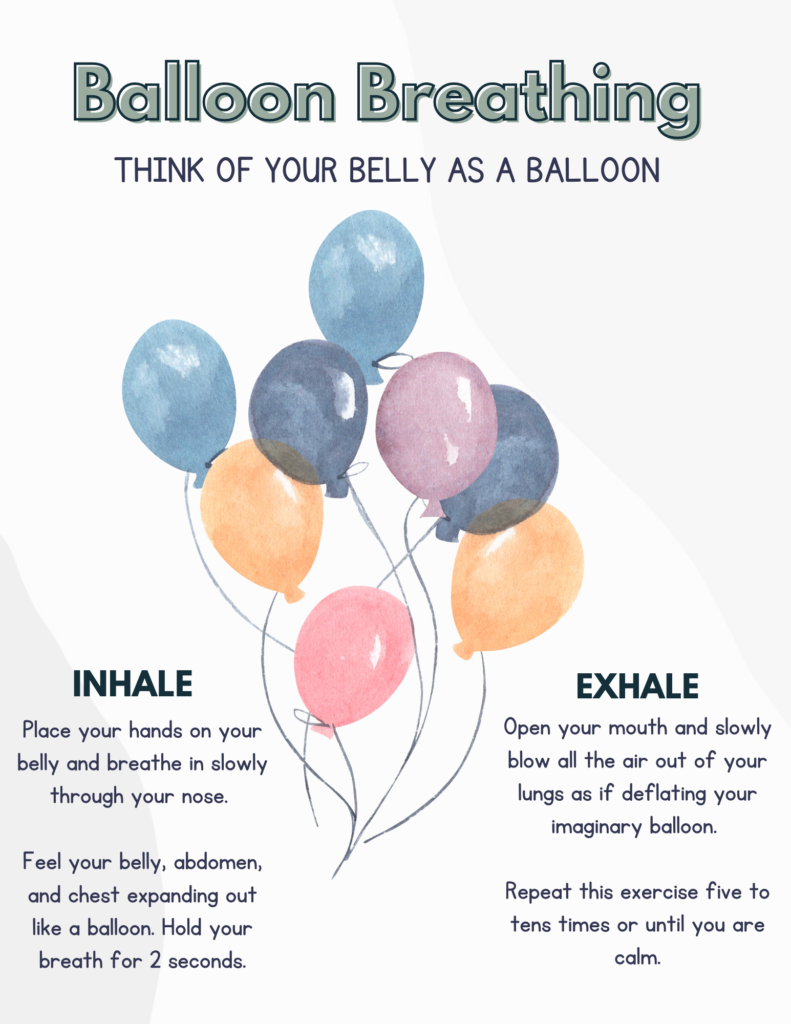
Rainbow Breathing
This is the final printable poster from the package.
Children trace the arc of the rainbow on the poster with their fingers, following the direction of the arrows.
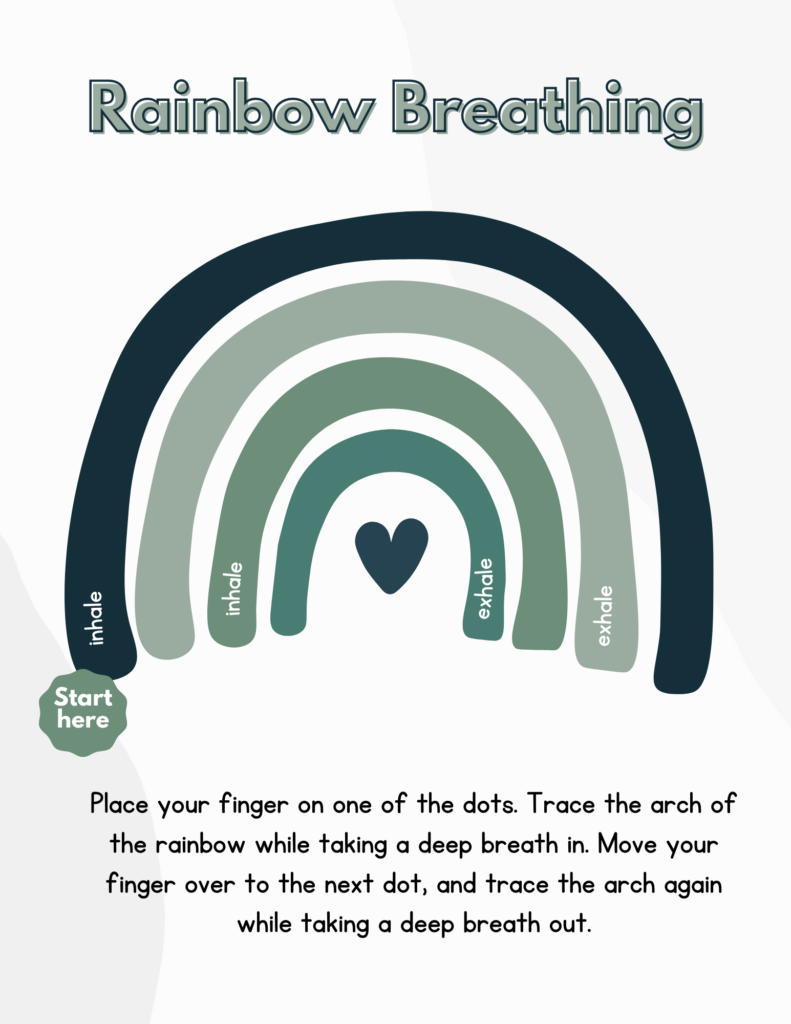
Want All Four of the Posters Above? Get them here.
Five Finger Breathing
Five-finger breathing is an excellent co-regulation strategy because you and your child can put your palms together and trace them, doing the breathing with each other.
Co-regulation is an essential part of developing emotional self-regulation skills.
We keep the visual for this activity on the wall in our calming corner (pictured below). You can print your own on this school psychologist’s blog.

Bumblebee Breathing and Butterfly Breathing
You can get nine free printable deep breathing activities from ClimbRx® here. But, my two favorites from these printables are the bumblebee breathing and the butterfly breathing.
The bumblebee breathing incorporates buzzing as you exhale to add vibrations, which are calming to many people. Butterfly breathing gets your body moving, incorporating added sensory input to help with self-regulation.
Lazy 8 Breathing
Lazy 8 breathing is part of the Zones of Regulation curriculum, which is a full social-emotional learning program for kids that teaches emotional regulation.
This is another one we keep hanging in the calm-down corner. My son has also, on occasion, drawn the figure 8 on the palm of his hand to remind himself to practice deep breathing.
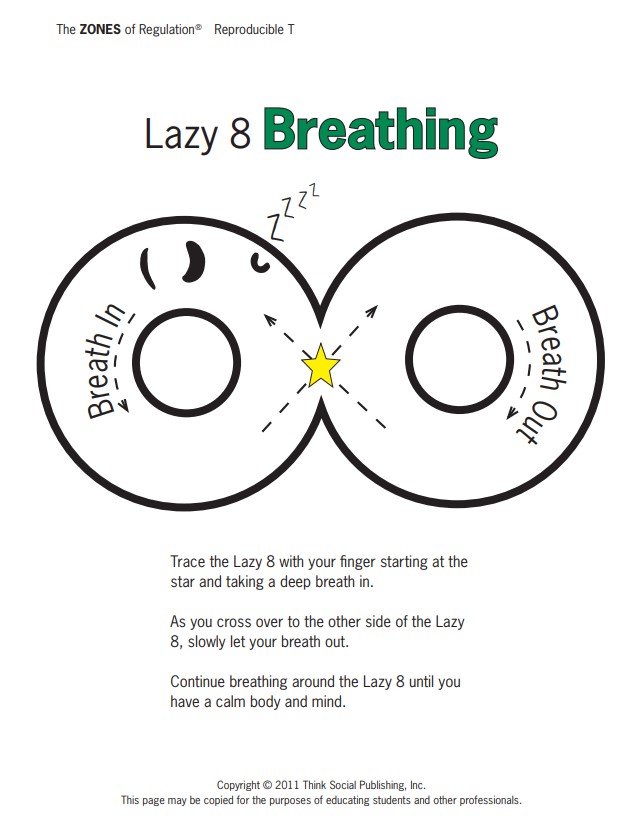
Remember, the key to teaching kids deep breathing is to make it a positive, consistent part of their daily lives.
With patience and creativity, parents and teachers can equip children with a powerful tool for emotional regulation and well-being.

